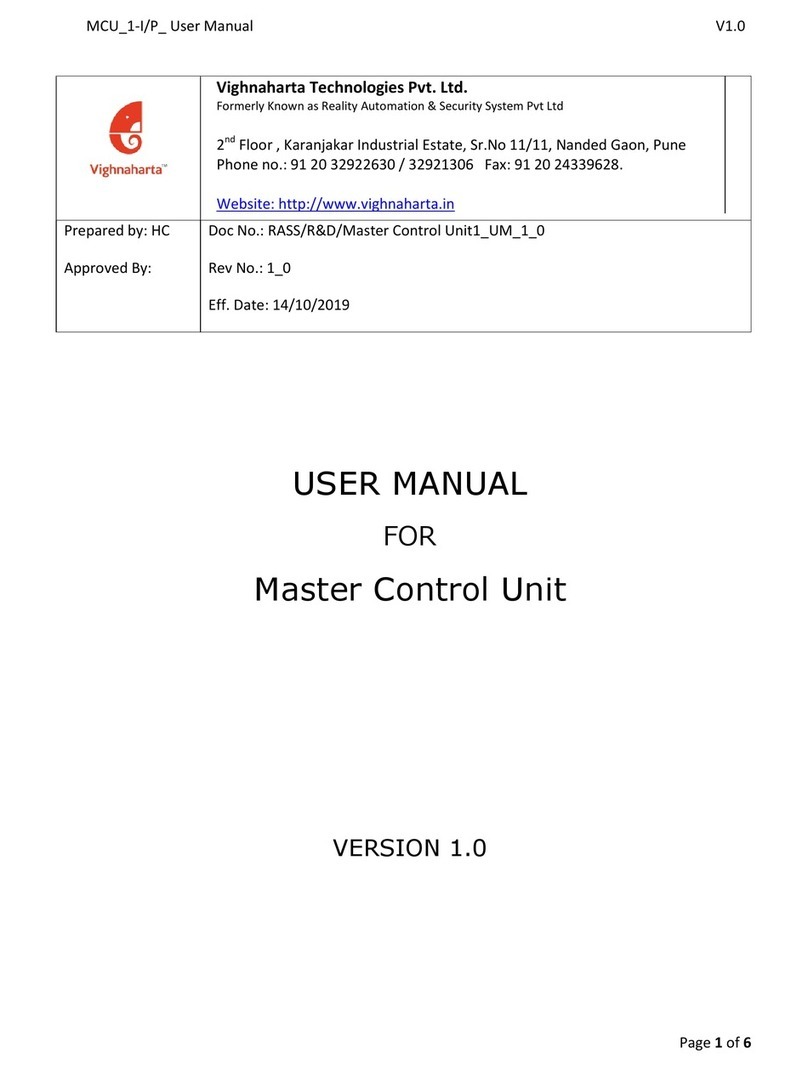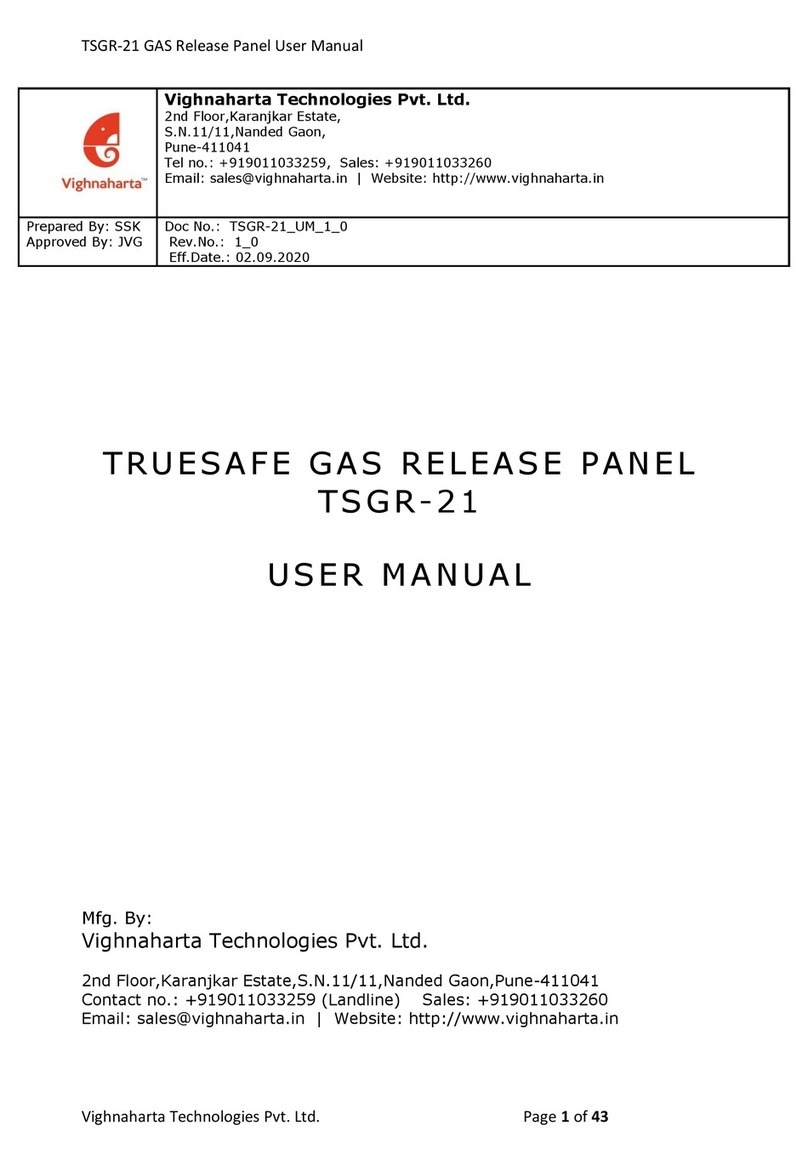TSFC 24-2/4 User Manual
Vighnaharta Technologies Pvt. Ltd. Page 2of 26
Fire Alarm System Limitations
A fire alarm system—typically made up of
smoke detectors, heat detectors, manual pull
stations, audible warning devices, and a fire
alarm control panel with remote notification
capability—can provide early warning of a
developing fire. Such a system, however,
does not assure protection against property
damage or loss of life resulting from a fire.
The Manufacturer recommends that smoke
and/or heat detectors be located throughout
a protected premise following the
recommendations of the National Fire
Protection Association Standard 72 (NFPA
72), EN54 Standards, and manufacturer’s
recommendations.
Smoke detectors may not sense fire where
smoke cannot reach the detectors such as in
chimneys, in or behind walls, on roofs, or on
the other side of closed doors. Smoke
detectors also may not sense a fire on
another level or floor of a building. A
second-floor detector, for example, may not
sense a first-floor or basement fire.
Particles of combustion or “smoke” from a
developing fire may not reach the sensing
chambers of smoke detectors because:
• Barriers such as closed or partially closed
doors, walls, or chimneys may inhibit particle
or smoke flow.
• Smoke particles may become “cold,”
stratify, and not reach the ceiling or upper
walls where detectors are located.
• Smoke particles may be blown away from
detectors by air outlets.
• Smoke particles may be drawn into air
returns before reaching the detector. The
amount of “smoke” present may be
insufficient to alarm smoke detectors.
Smoke detectors are designed to alarm at
various levels of smoke density. If such
density levels are not created by developing
fire at the location of detectors, the detectors
will not go into alarm.
Heat detectors do not sense particles of
combustion and alarm only when heat on
their sensors increases at a predetermined
rate or reaches a predetermined level. Rate-
of-rise heat detectors may be subject to
reduced sensitivity over time for this reason,
the rate-of-rise feature of each detector
should be tested at least once per year by a
qualified fire protection specialist.
Audible warning devices such as bells may
not alert people if these devices are located
on the other side of closed or partly open
doors or are located on another floor of a
building. Any warning device may fail to alert
people with a disability or those who have
recently consumed drugs, alcohol or
medication. Please note that:
• Studies have shown that certain people,
even when they hear a fire alarm signal, do
not respond or comprehend the meaning of
the signal. It is the property owner's
responsibility to conduct fire drills and other
training exercise to make people aware of
fire alarm signals and instruct them on the
proper reaction to alarm signals.
A fire alarm system will not operate without
any Electrical power. If AC power fails, the
system will operate from standby batteries
only for a specified time and only if the
batteries have been properly maintained and
replaced regularly.
The most common cause of fire alarm
malfunction is inadequate maintenance. To
keep the entire fire alarm system in excellent
working order, ongoing maintenance is
required as per the manufacturer's
recommendations, and UL and NFPA
standards and EN54 standards. At a
minimum, the requirements of NFPA 72 or































